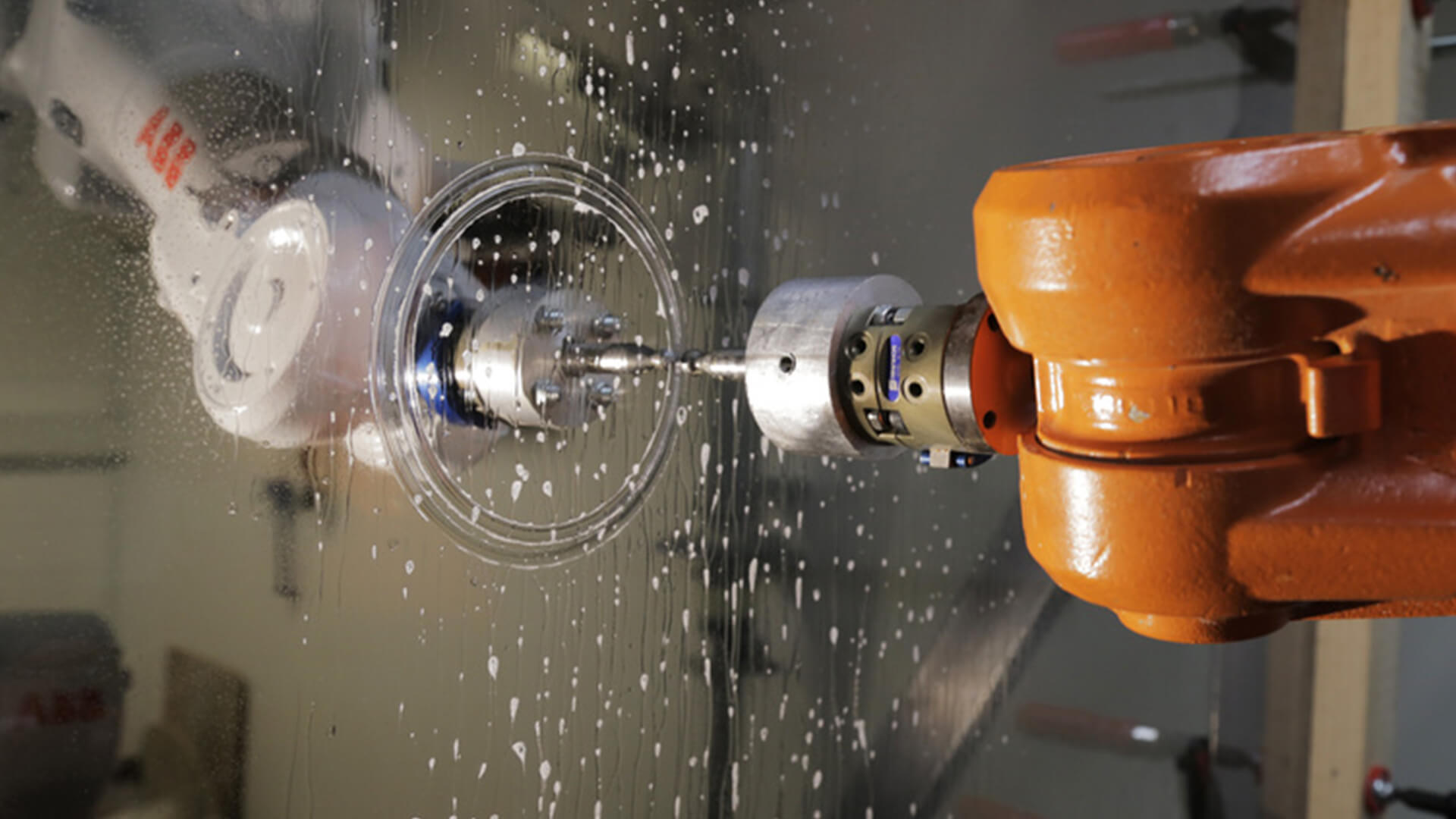Incremental Sheet Forming: CITA
Project By
CITA
Partners
HAL Robotics, SICK Sensor Intelligence Denmark, KET Konstruktives Entwerfen und Tragwerken, UDK Berlin, Bollinger + Grohmann
Application
Incremental Sheet Forming
Outcome
Thin-skinned bridge demonstrator made of sheet metal, given its strength by creating unique indentations in the sheets using dieless robotic sheet forming
CITA – Centre for Information Technology and Architecture
CITA is a research department of the Royal Danish Academy, exploring the intersections between architecture and digital technologies. Between 2015 and 2016, they realised a series of demonstrators in which they experimented with dieless robotic incremental sheet forming to create thin-skinned metallic structures. The outcomes provided compelling evidence that considering robotic manufacturing constraints in holistic design approaches could lead to innovative ways of designing buildings and infrastructure.
HAL Robotics software was used to program complex robot toolpaths for manufacturing ribbed panels directly from generative CAD models computed in Rhino/Grasshopper.
Robotic Incremental Sheet Forming: an innovative process
Incremental sheet forming is a manufacturing process that shapes metal parts from flat sheets. It serves as an excellent alternative to die casting and sheet metal pressing, particularly for high-mix, low-volume production.
By using two synchronised robots to press on both sides of the metal sheet along a specific toolpath, unique metal parts can be formed at a relatively low cost.
A Bridge Too Far aimed to demonstrate how structural construction components could be obtained by reinforcing metal plates using robotic incremental sheet forming. The process involves one robot pressing on the metal sheet while another robot controls the deformation on the other side of the sheet. By synchronously moving these two robots and incrementally pressing, further deep indentations are created. In addition to the robots themselves, force sensors and laser-distance sensors were integrated to validate deformation and ensure consistent force application.
HAL Robotics software for Robotic Incremental Sheet Forming (ISF)
The CITA demonstrators consisted of distinct panels, each featuring intricate reinforcing patterns. The design of each panel was based on a digital model, on which various multi-scale optimisations were performed to compute their optimal geometry to sustain structural constraints and ensure their fabricability. As a result, each panel ended up being unique.
Fortunately, because the solution was programmed using tour software, toolpaths for both robots could be derived directly from the CAD data and executed from the engineer’s workstation.
To learn more about our software modules for robotic incremental sheet forming, CAD-to-robot toolpath generation and other complex manufacturing processes, please feel free to contact us.



